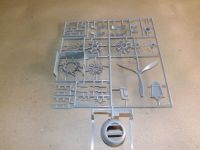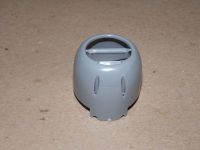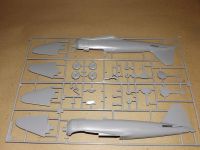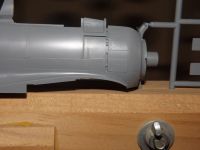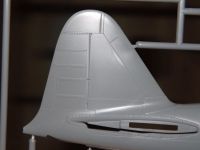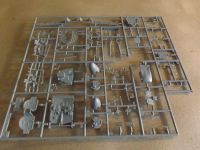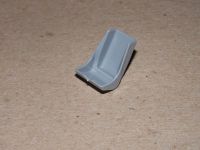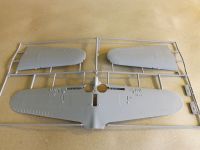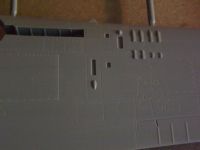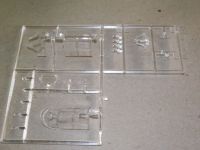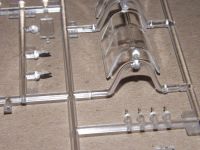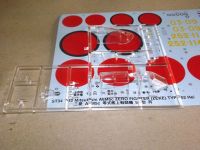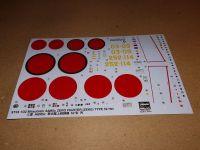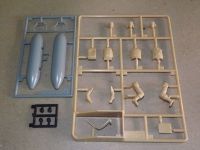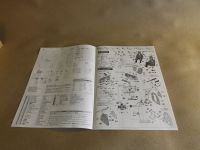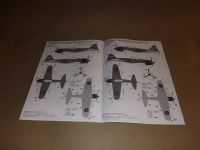Hasegawa | ST34: 1/32 A6M5c Type 52 Zero
Reviewed by Mike O'Leary
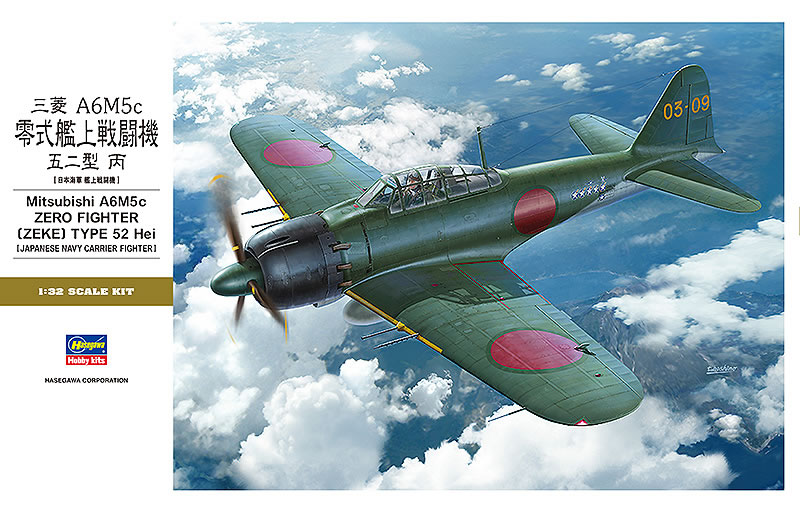
The Hasegawa A6M5c Zero arrived the other day, and my first impression was "NICE!" This is a kit of the plane the Japanese used to try to make up the lost performance edge encountered when facing the latest allied fighters. The exhaust gas was redirected for thrust effect, which led to a 20 KPH speed increase. Some armament changes, and pilot armor were added as well. There are a lot of subtleties to the Zero, so let's look at what the kit gives us.
Engine
The Sakae 21 14-cylinder radial engine is well represented, and Hasegawa has used slide molding technology to mold the intake and exhaust manifolds. The exhaust manifold is ever so slightly dimpled on the outlet side - a nice touch. The lifter tubes are molded in two pieces, and the sprue gate is on the base, which leaves the delicate lifter tubes free; no more hassle detaching from the sprue! Open, and closed cooling flaps are included, and the crankcase front is well defined. I like to add a bit of detail to a radial engine, and Hasegawa has given us a very good start in that direction. Two spinners and bases are included in the box: one larger and somewhat more rounded, and a shorter more pointy type. Each has its own baseplate. The cowling is slide molded, and has the correct asymmetric gun troughs for this mark. The bulged shape looks pretty good to my eye, and the cowl has delicate recessed panel lines and cowl fasteners molded in. The prop is cleanly molded, but has no detail at the base where the pitch mechanism would be. While this will be covered by the spinner, some may want a bit of detail there.
Fuselage
The fuselage has delicate recessed panel lines, 3D panels where appropriate, and riveting is suitably restrained. As mentioned earlier, re-direction of the exhaust gases added more speed. This meant heat resistant plates had to be added to the fuselage, and the panels are delicately shown, with rivet detail; again, to me, a nice touch. The rudder has finely molded rib detail, with delicate stitching, and the underside has an opening for the one-piece tailwheel, and included landing hook; a blank is included to close that area off, which was common in the later stages of the war.
Cockpit
The cockpit looks very good to my eye. All of the frames are delicately molded, and Hasegawa has given a good mix of molded in detail, with knobs, levers, and other controls to add for a suitably busy office. Building the cockpit takes 20+ parts, and includes a life raft (not deployed!) and parachute - again, not deployed. The seat is well shaped, with nice thin edges, and with out seatbelts molded in. Good for some, maybe not so for other, but in this scale, separate seat belts really dress up the cockpit. I like it. Paint instruction is given for Mitsubishi, and Nakajima machines. The instrument panel is well molded, and includes dial marks, and nine separate decals for the various instruments and gauges are provided as well, a nice touch. One detail in the Zero is that the cowl machine gun butts are mounted to a frame ahead of the instrument panel, and protrude a bit into the cockpit. Hasegawa has provided two 7.7, and one .50 cal. machine guns to use. Correct for the A6M5c type, and a bit of flexibility to backdate the basic kit to an earlier series type.
Wing
The wing is molded in a pretty typical 3-piece arrangement; one lower, and two upper halves. A wing spar is included, and there is also a drop in piece for the gear wells, with a good base level of detail. One detail I really like is the sprue attachment points being molded on the wing root, and leading edges only; the trailing edge has no attachments at all. A much easier clean up and fitting is possible, and this shows some well thought-out parts layout. The wing has delicately molded panel lines, and the various Dzus fasteners, and screw, and rivet heads are well represented. The ailerons have the same delicate detail as the tailplane. The empty brass chutes are molded as recessed, but are very thin, and should be easy to open, and box in for those that want to. Another detail in the C series Zero is the addition of a 4-point anti-sway brace system for the drop tank. Again, holes are indicated to be drilled if one wants to add the included drop tank, and a separate piece is included to mount the tank to the wing. Hasegawa has provided a blank panel for that location as well. Underwing sway braces are also molded into the wing, again with delicately molded rivets. Blanks are provided to close the main gear bays for the in-flight look, and outer and inner gear door panels are included to show the model on the ground. While the tires have no tread detail, separate hubs are provided, as are brakes lines and some other bits to detail the landing gear. The inside of the main gear doors has some detail, and the total finished look should be quite nice out of the box. A step for access to the wing is also included, with a detail to show where to drill the two mounting holes.
Clear Parts
The clear parts are thin, with minimal distortion. The three main sections are molded as separate pieces, and the frames are very nice, probably only .010 thousandths relief; my dial caliper shows the canopy at .032 thou. total, with the frame. Pretty thin, again, with delicate detail. Hasegawa has included a separate panel for the armored windscreen, as well as the clear armored panel that mounts behind the pilots head. The various navigation lights are all separate as is the sight glass for the gunsight.
Decals
The decals have detail for two pilots, Tanimizu, and Iwamoto. Two styles of Hinomaru are included, and what looks to be a pretty full set of stencils as well. Three different data stencils are provided for the fuselage, and as an additional touch, pilot rank markings are also included, to go with the very well molded pilot figure. The carrier film has been pretty closely cropped on most of the decals, which is a great aid in placement. The instructions show decal placement clearly, and have additional notes for some details.
Instructions
The instructions show well detailed steps, and utilize detailed call-outs for sub-assemblies. There is a sprue layout, color notes for GSI Creos aqueous paint, as well as Gunze Mr. Color. I'm not familiar with Creos, but the Mr. Color references give me a starting point to cross reference to other paint types.
Conclusion
All in all, this is a pretty impressive kit. There have been a few A6M Zero kits over the years, with the Revell and Hasegawa kits both being a little long in the tooth. The Doyusha/Tomy/Swallow kit is an A6M2, and again, older, while the Tamiya kits are somewhat on the pricey side. To me, Hasegawa has filled the niche perfectly with a well detailed kit that should do two things: build well out of the box, and provide a great base for the modeler that wants to add detail to suit their own style. What really appeals to me is that Hasegawa has done this across the entire kit: engine, cockpit, landing gear bays, and indeed, with the entire wings and fuselage. I can see a lot of these being added to collections and on contest tables in the near future.
Acknowledgment
Many thanks to HobbyLink Japan for the review kit, which can be purchased at the following link:
1/32 Mitsubishi A6M5c Zero Fighter Model 52 Hei
© Mike O'Leary 2016
This product is available from the following LSP sponsors
This review was published on Friday, June 24 2016; Last modified on Friday, June 24 2016

